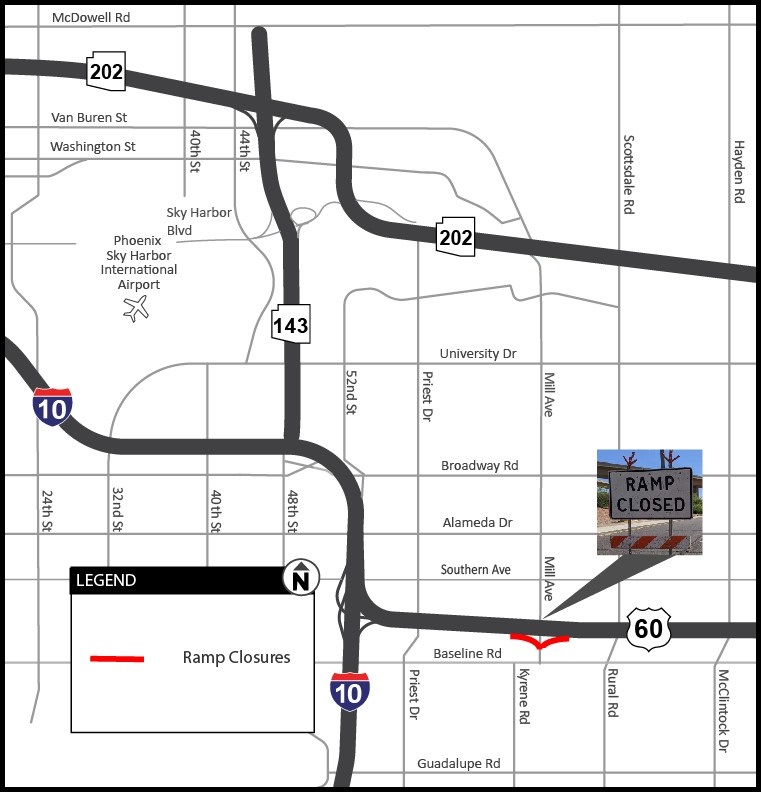Ramping up knowledge of ramp closures
Ramping up knowledge of ramp closures

We’re all used to freeway projects that require full closures in one or both directions. But unless you’re a traffic engineer, you probably haven’t thought about how these closures impact nearby exit and entrance ramps, and the local streets they lead to and from. During closures for work on the I-10 Broadway Curve Improvement Project, freeway off- and on-ramps on the detour routes are also sometimes closed, and for good reason.
For example, the Arizona Department of Transportation, in cooperation with the city of Tempe, might close the eastbound US 60 Mill Avenue off-ramp when eastbound I-10 is closed for work south of US 60. We’ve received a lot of questions about this; why close a US 60 off-ramp when it’s I-10 that is closed?
US 60 (along with the Loops 101 and 202) is a commonly used detour route for the project. ADOT is using these highways as detour routes instead of local roads and streets, which are not designed or constructed to handle high volumes of interstate traffic.
Traffic-flow problems (in simpler terms, traffic jams) can occur when drivers on US 60 “self-detour” onto Mill Avenue to try and rejoin I-10. Mill Avenue simply cannot handle this amount of traffic and it backs up … sometimes all the way down the exit ramp, and on to the US 60. Adding to the problem, Mill Avenue south of US 60 ends near Baseline Road, so drivers often find themselves going in circles along surface streets. The solution? Closing the Mill Avenue off-ramp to prevent the heavy congestion and backups and to keep drivers on the US 60 detour route.
If Mill Avenue is your destination, your best bet is to continue east on US 60 to Rural Road or McClintock Drive, which can handle higher volumes of traffic better, and then backtrack.
Another scenario drivers sometimes question is why some freeway on-ramps are closed, even a few miles before a freeway closure. When these on-ramp closures occur, it’s because ADOT doesn’t want to “feed” the closure - that is, allow more drivers onto a freeway when everyone else is trying to get off of it and onto the detour route. Think of it as trying to pour water into a bottle that is almost full. Once the bottle tops off there isn’t anywhere for the rest of the water to go. The same scenario applies to freeways too, bringing traffic to a standstill.
These are just a couple of examples that illustrate how our state highway system and local streets make up a complex transportation network. The decisions about what ramps or roadways can stay open and which ones need to close are carefully made to keep everyone moving as safely and efficiently as possible to where they need to be.

